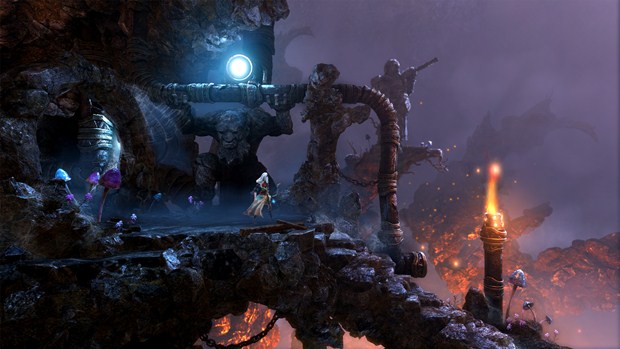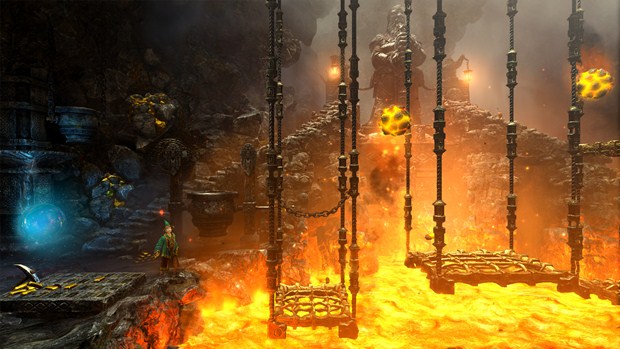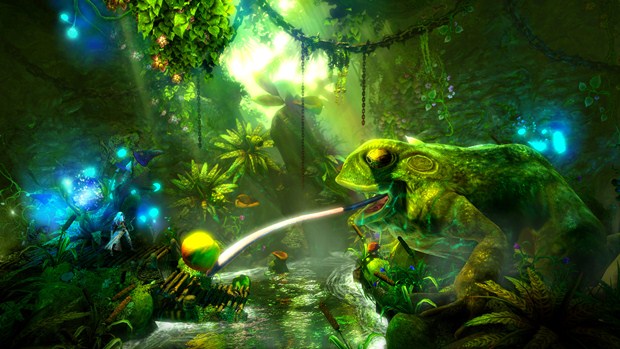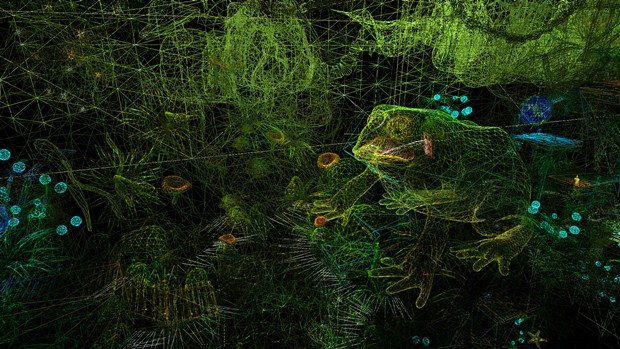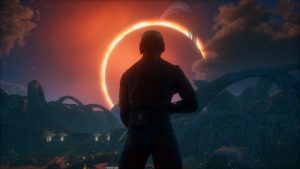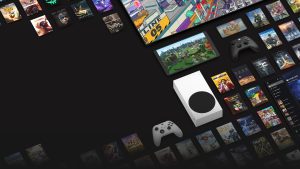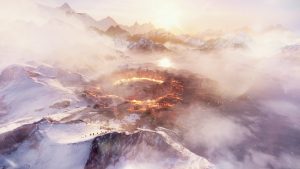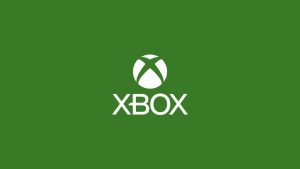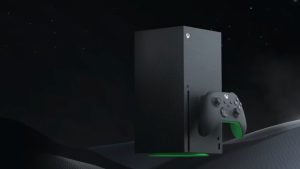
There aren’t a lot of side-scrolling, 2D, action RPGs out there. There are even less of such games which offers players a chance to cooperate together with varying classes and across a vast fantasy world. That was until Trine 2 came along – that too after the amazing first game – offered an amazing experience overall to players. Surprisingly, there wasn’t an over-arching design that dominated the game when it came to the PlayStation 4 as Trine 2: Complete Story.
Frozenbyte Studios’ marketing manager Kai Tuovinen offered his thoughts on PlayStation 4 version, documenting the changes from the game’s initial inception to the final stretch, how the new content fundamentally changes the game overall and the process behind the level design.
Overall development from the concept stage to code:
The concept process for Trine 2 started already during the development of the original Trine; We had learned from our experiences on the aftermath of our first game, Shadowgrounds, that we should immediately have a follow-up project after a game was complete. So the decision to make Trine 2 was made quickly, and from early on we began planning the improvements and new features – many which were left out from the original Trine (sometimes due to time constraints and sometimes because they would have clashed with other existing features/design).
Since Trine 2 was a sequel and the gameplay was very similar, we didn’t use any grand design documents to cover the entire game. Instead, the design team focused on doing documentation for different core elements of the game: The new skills and abilities, enemies, interactable objects and puzzles – basically everything gameplay related was thought out.
"A lot of the things you see in Trine 2 are custom animated and the famous frog scene is a good example. It was originally modeled and animated for use with our Trine 1 engine back in 2009/2010, but broke completely when transferred over to the new engine. It took over two weeks to get it working and that seemed like time wasted – but the frog became one of the most iconical scenes in the game, so it was definitely worth it!"
There were a lot of things to consider, since all the puzzles in Trine 2 are pretty open ended and can be solved in a number of ways. Adding a new skill can drastically change how certain things interact with each other, and with physics involved a lot can happen with very minor changes, so balancing was important!
For example, it was important to limit the amount of wood used, so the Thief character couldn’t grapple onto everything (her grappling hook attaches only to wooden surfaces, and can easily become overpowered).
Once designs for different features had been finalized, our programmers began work on them, and in the meantime they had done a lot of work on rewriting our game engine. In fact, the programmers spent more or less the entire year from summer 2009 to summer 2010 and even beyond to rewrite the whole game engine, aiming for a modern engine with multiplayer features and other improvements over the original (including ”save anywhere” save system and a million other things that had bugged us throughout the early years).
We had a concept artist who painted a lot of environments and enemies to help with envisioning the different levels and the story created by our writer.
Also a lot of the concept art was used in the game itself as assets in the background, some could be found in secret chests and they were also used in the storytelling screens in between maps.
Here the Dwarven Caverns concept art comes to life in the actual game:
The different levels in Trine 2 were first mapped out by our level designers, who place and design all the gameplay assets to begin with. They start with a basic pathing for the map and add collision detection to limit where the players can move around and interact. Different types of puzzles are then built into the levels, and physics-based properties are defined to make the different parts work as intended. We use a lot of different elements to the puzzles such as fire, water, weights, ropes and levers, and creating puzzles with good variety for 20 levels takes some time.
Enemies and their AI are added next, often scene by scene. The main recurring enemies in the game are goblins of different varieties, but we also have environment specific enemies such as flesh-eating plants or wyverns, and the boss fights vary more: They’re often puzzles of some sort.
The grey and brown-colored areas are collision indicators – usually placed early on during level development.
Different components of a lighting / electricity related puzzle at the end of the Cloudy Isles level. You need to redirect the lightning to hit the water, and balance something on the device to connect it to the electric current.
When the levels are completed from a gameplay perspective, one of our senior artists starts adding art assets (modeled and textured by other artists) that really make the scenes come to life. A lot of the things you see in Trine 2 are custom animated and the famous frog scene is a good example. It was originally modeled and animated for use with our Trine 1 engine back in 2009/2010, but broke completely when transferred over to the new engine. It took over two weeks to get it working and that seemed like time wasted – but the frog became one of the most iconical scenes in the game, so it was definitely worth it!
We were quite happy with Trine 2 when it was released during the end of 2011, but at the same time we again knew that we had left a lot of cool ideas on the drawing board and it would be cool to implement some of those into the game. At the time of Trine 2’s release we were toying with a couple of interesting game concepts, but we decided that those weren’t yet ready for full-blown production, and set to work on the Goblin Menace DLC for Trine 2.
We really felt that this would be the definitive version of Trine 2, and the team was very happy with the quality and detail of the 6 new levels and the new skills for the characters. We combined the original campaign and the Goblin Menace campaign, along with the new level Dwarven Caverns, for the Director’s Cut version (2012, Wii U) and also to the game Complete Story version (2013, PC, PS4) – both versions are basically the same in content.
Decision to bring Trine 2: Complete Story to PS4
"For the PS4, prior to the launch much of the documentation was incomplete and some times not translated to English. But in the future these should get filtered out when more development is done for the console, and there's not such a rush as there was during launch time."
The decision to bring Trine 2: Complete Story for the PS4 was made fairly early on after the console’s announcement. The success we had on the Wii U with Director’s Cut made us work hard on getting the game ready for the PS4’s launch, since being available from the get go of a new console taught us the benefits, and we really wanted to be there for the PS4 launch. We didn’t actually get the devkits for the PS4 until around half a year ago, so the porting process was started very quickly and we wanted to make it to launch.
Another reason to bring Trine 2: Complete Story to the PS4, was that finally another console (besides the Wii U) was powerful enough to run the new levels from the Goblin Menace expansion without optimizations, and those were integrated into the game for Complete Story. For the PS4 we quickly learned that we could even increase the resolution and framerate and run the game steadily, and even add 3D support (which had been working magnificently on PC already).
Engine development and how the engine was ported over to PS4
Our game engine has been running on the same tech (although constantly modified and improved) ever since it was rewritten after Trine 1 – so it was made with Trine 2 in mind specifically. After Trine was finished, our programmers re-wrote the entire engine from scratch, which took over a year, but that allowed us to bring many wanted features such as online multiplayer to the game.
Generally speaking the PS4 port was easy and required little work. The Wii U port was somewhat harder, but that was mainly due to the required work on a lot of input support, as there were many different controllers and of course the touch controls of the Wii U GamePad. Our engine has typically behaved well when ported to different platforms, and we have quite a bit of experience of ports now (Trine 2 is on PC/Windows, Mac, Linux, Xbox 360, PS3, Wii U and PS4), so that has certainly helped with new platforms.
In the past three years, there’s been tremendous development on our engine, and one of the big new features we are aiming for now after multiple ports is to further streamline our code to be transferrable to all the relevant future platforms that we decide to bring our games to.
Each port has typically the same things that need to be done specifically for each platform: input support, multiplayer game support, profile & save file support, achievements, getting SDK’s for physics (e.g. PhysX), audio (e.g. Wwise) and videos (e.g. Bink). Also every console platform has their own set of requirements (PS4 TRC, Xbox TCR, Wii U Guidelines) that need to be adhered to as well. In theory they are quite similar on each platform, but all of them do have some specific ones as well. These were a bit of extra work (implementation + testing + fixing). For PC and Steam we can pretty much publish anything we want without requirements.
Also the game’s menus always need some customization, and tool tips that match the platform’s controller.
For the PS4, prior to the launch much of the documentation was incomplete and some times not translated to English. But in the future these should get filtered out when more development is done for the console, and there’s not such a rush as there was during launch time.
The PS3 port was a lot of help for the PS4 porting process, a great deal of miscellaneous code was ported almost directly through that one. Probably the biggest job was the renderer, where we had to remake some things slightly, such as shaders.
Of course when we aimed for launch we knew that we were making a port/game for a device that wasn’t on the market yet, and the consoles we had at our office were practically prototypes, so some unexpected problems were natural. Sony was helpful throughout the development process and we got all the problems (which were very minor things) sorted out quickly, even though many of the issues we experienced were entirely new to them as well. So being a launch title for PS4 did require a bit of extra work, but it was nevertheless the easiest of our ports so far.
Controller input for the console
On the PS4, input was straightforward to work with and we had no special issues. The touchpad is similar to a touch screen, so making the controls work based on our Wii U touch screen controls was fairly easy.
There was little to no new things needed, only some adjustments and applying those to previous controls which we took from our Wii U port. On a low level, the API on the PS4 is very simple (even easier than PS3, but nothing majorly different from most platforms) and there was enough documentation to help us through.
Even up to the launch, we did not have any final version of the new PS4 controller (DualShock 4) which had some impact on the touchpad support, although this did not necessarily change anything. The protytype controller had slightly different material, which felt a bit weird, but on the final released controller the material felt much better and nice.
Asset creation along with optimization for 1080p resolution
The art assets that you see in Trine 2: Complete Story are all 3D-rendered objects, even everything in the background. We have several 3D-modelers who create those objects, some animators, and one very busy texture artist.
The famous frog scene – a normal screenshot and the another from our editor, with wireframes and a different angle, that show the 3D objects that make up the scene.
We haven’t done anything specific for the PS4 to optimize the assets for 1080p, because the console was able to run the game without any problems at a solid 60fps. The only difference is that the PS4 version had a rewritten renderer which does some very minor visual changes almost unspottable to the naked eye.
Sound development
We worked together with AriTunes for the sound design in Trine 2. Most of the sound effects came from AriTunes, but their implementation was handled in-house. For the sound engine, we used Wwise by Audiokinetic, which enabled us to do many audio design tasks without requiring code.
"We haven't done anything specific for the PS4 to optimize the assets for 1080p, because the console was able to run the game without any problems at a solid 60fps."
In the Trine 2 editor, we made general components for the most typical situations such as point audio, collisions and movement sounds. If making a general component for a situation is not possible or reasonable, sound playback can be controlled with communication between different game object components inside our editor – sound components send events and parameters to Wwise, and Wwise plays back the sounds based on those determined properties.
The workflow for sound design inside the level editor was roughly as follows: First we add the areas controlling the playback of background ambience sounds and non-interactive point audio. Then we set up interactive sounds that can be made with single components, such as sounds for different types of rotating and moving objects. At last we add sounds to the more complex puzzles, where the conditions for sound playback are determined by the state of components in the game objects.
A few examples:
Rotating and moving objects are very common. For those, we have designed a sound component that sends data to Wwise about linear and rotating movement speed in parameters. For example, a platform made out of wood and metal that rotates gets this component added to it in the editor; we determine it to play a certain sound event and to send the rotating speed as parameters to Wwise. In Wwise, for the rotating sound we set curves with a samplerate and we set the sound volume, and determine them to use the rotating speed receieved from our game engine.
A sound event call from our game engine can also do more complex things in Wwise. For example the damage sound from the Mummy Goblins is a set of multiple sounds combined – mostly different hits and vocal incoherent rumblings. When the event is called, the hits and incoherent rumblings are played, in such a way that sounds from both sets are played in a random order, and we avoid playing the same sound effect consecutively.
Adjusting and fine-tuning the gameplay
In the past two years, there’s been a number of changes to Trine 2. Most notable ones came to fruition when we released the Goblin Menace DLC, where a number of new skills were added to the characters. For example we added magnetism-related skills to the Wizard and Knight characters, and all the 13 original levels had to be reworked to include new properties for metal surfaces, so the skills would be useful in all the levels and not just the 6 new ones.
We’ve also done an extensive number of bug fixes over the few years. Porting the game to different consoles has the benefit of revealing issues that might not have otherwise been found. QA teams from different companies tend to find different types of bugs, but most often though they are console-specific. Our own internal QA has done a good job of ironing out the majority of gameplay bugs, and there’s a notable difference between the 2011-released Trine 2 and Complete Story.
Adjustments and changes to extra content such as Dwarven Caverns and Goblin Menace
For the Goblin Menace, our artists had a more lenient schedule for completing the assets and levels, and they produced some of their best work. The Goblin Menace and Dwarven Caverns levels had entirely new and different looking environments and we also added more frequent cutscenes, which helped a lot with the story – we think the Goblin Menace campaign is our best storytelling work so far.
Content-wise Trine 2: Complete Story is nearly identical to the Director’s Cut that we have for the Wii U, with the exception of one secret Nintendo-themed room in the Dwarven Caverns level, which can only be found on the Wii U version – a small tribute to Nintendo who we loved working with! The Complete Story on PC and on the PS4 are identical in their content.









